The Lenovo Legion 5 Pro sits in the manufacturer’s gaming range, but that Pro suffix means that this notebook is designed for work, too. That’s no surprise when you consider its unique display specification and some of its features, and it makes perfect sense – because lots of people use the same laptop for work and play.
The components are well-placed for both of those uses. The Ryzen 7 5800H is a familiar chip that’s proved its worth in content-creation tasks and games, and Nvidia’s GeForce RTX 3070 is a capable GPU in mainstream situations. The review sample we received costs $1,599, and it pairs those core components with 16GB of DDR4 memory and a 512GB SSD.
As usual, several other configurations are available: a more affordable version with an RTX 3060 costs $1,369, and an entry-level model with a Ryzen 5 5600H and RTX 3050 graphics costs just $1,149. It’s a tempting package, which is just as well – because the Legion faces some stiff competition from the likes of Asus ROG and HP Victus range.
Features and Design
The Lenovo display is the clearest indicator that this notebook is ideal for professional tasks alongside the latest games. It’s got a 16:10 aspect ratio, which is more common on professional notebooks than on gaming devices, and it makes loads of sense for both situations. The extra vertical space means that you’ve got more room for games, but it also makes it easier to navigate websites, office apps and other tools when compared to 16:9 panels – they can seem a little squashed by comparison.
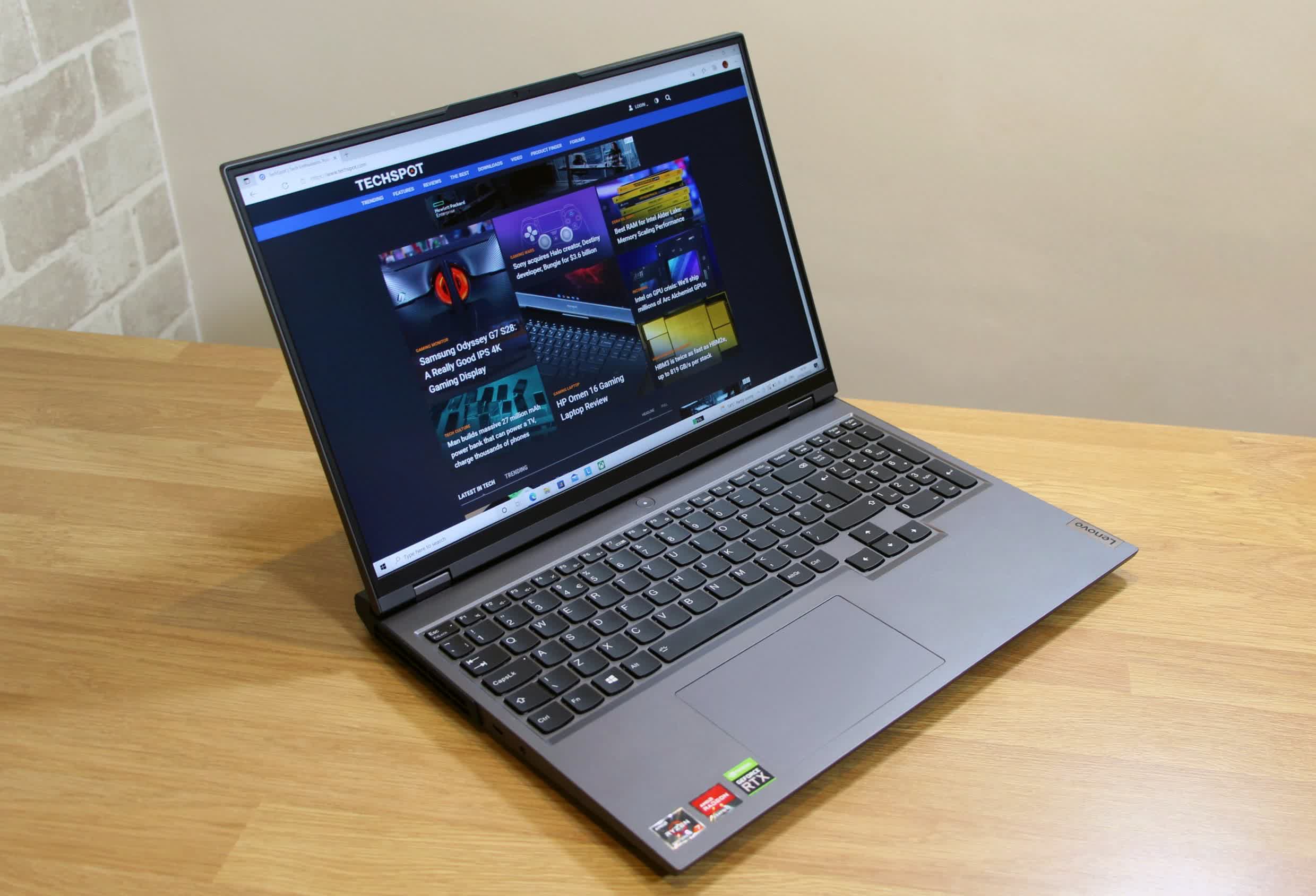
The display keeps impressing. Its 2,560 x 1,600 resolution delivers a crisper image than Full HD displays and the 1440p panels you’ll find elsewhere. The 16” diagonal is a decent move, too: it provides a bit more immersion and space than the average 15.6” notebook without the sheer size of 17.3” machines.
The 16” Lenovo Legion is 26.8 mm thick and 356 mm wide. That’s half a millimeter thicker and 7mm narrower than Lenovo’s standard 15.6” laptop. Those are superb figures, and Lenovo can cram the screen inside this relatively compact chassis thanks to slim display bezels.
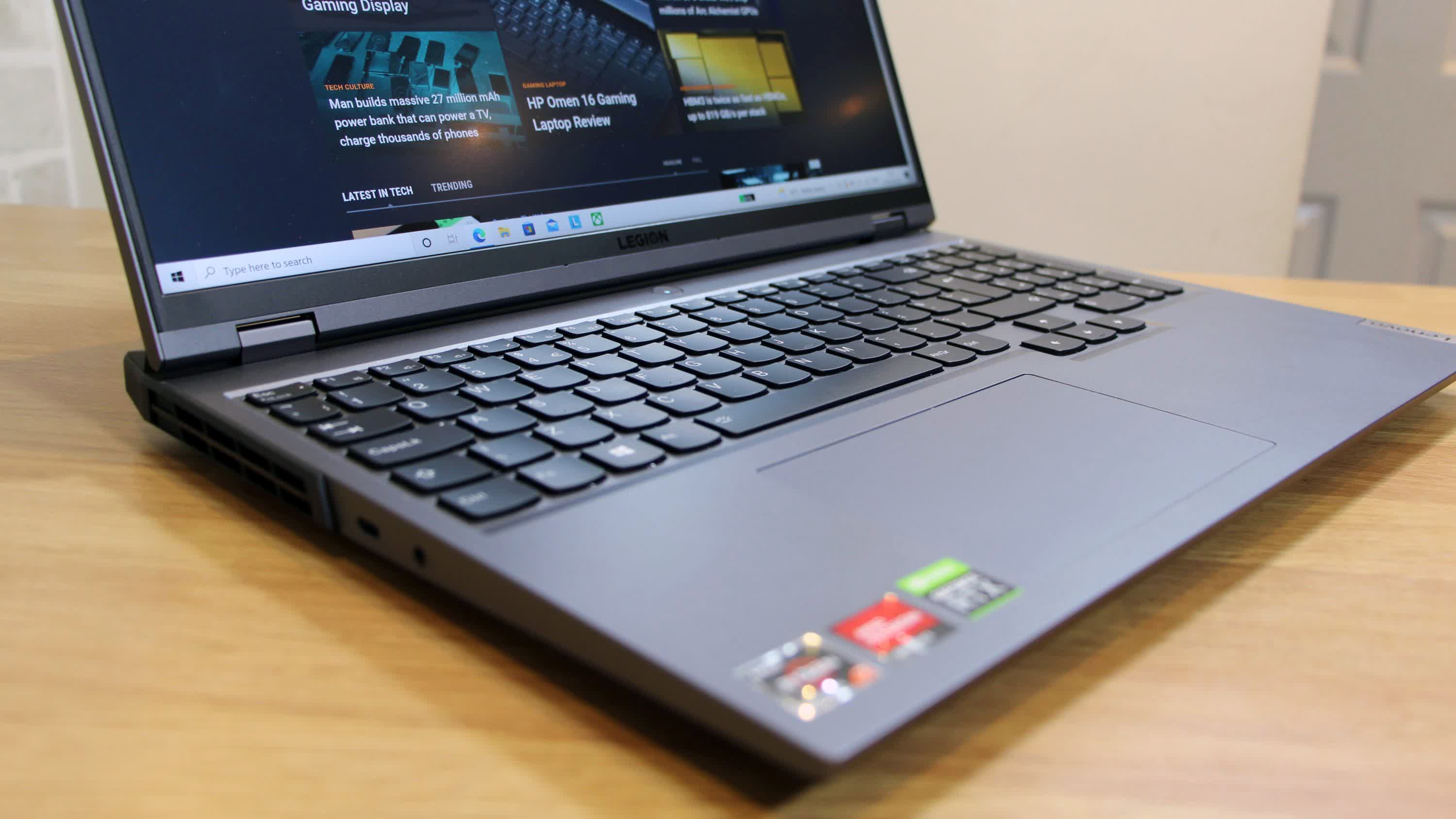
Nvidia G-Sync and a 165Hz refresh rate bolster the Legion’s gaming credentials. That’s high enough to provide butter-smooth motion in any mainstream single-player game, and it’s good enough to handle everyday esports.
Display Performance
The Legion’s tall display has good quality. The brightness level of 546cd/m2 is vast, and means that this laptop can handle any indoor and most outdoor situations, and it pairs with a black point of 0.42cd/m2 to deliver a contrast ratio of 1,300:1. The brightness and contrast ratio means that this display offers impressive vibrancy and nuance, especially in brighter areas. The black point could be a bit deeper to deliver extra depth in gaming’s darkest corners, but it’s not a big deal and doesn’t hinder gameplay.
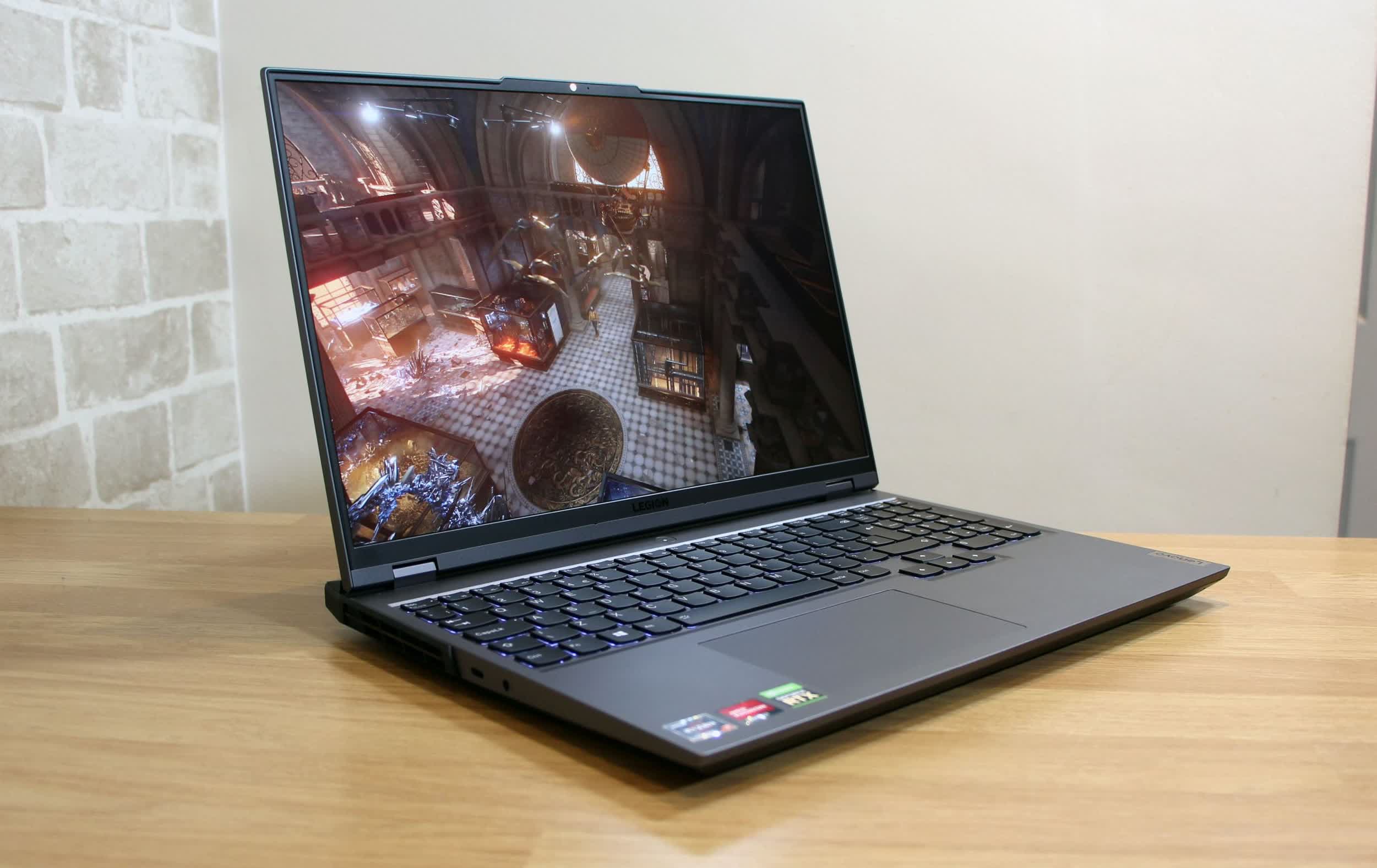
The display’s delta E of 1.28 and color temperature of 6,244K are excellent and mean that human eyes won’t detect any slight color deviations. The panel also rendered 95.9% of the sRGB color gamut at 99.9% volume, which means it produces virtually every color required by mainstream games and creative applications without becoming oversaturated.
Sadly, the panel can’t handle the Adobe RGB or DCI-P3 gamuts – it only produced 68.4% and 70.2% of those color spaces. That means the Lenovo isn’t good enough for HDR situations, or design workloads that rely on Adobe’s broader color space.
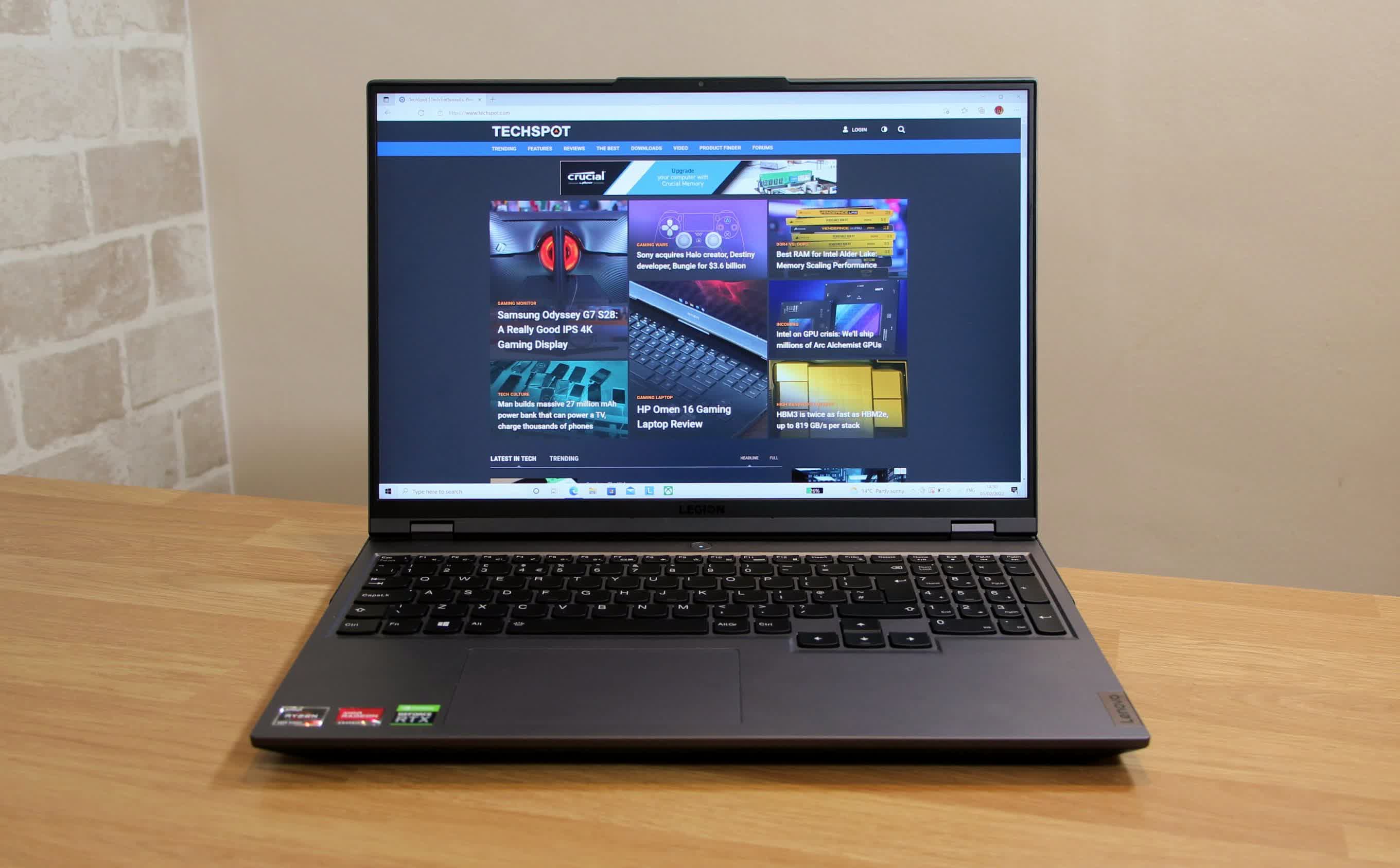
In most departments, though, the Legion’s display impresses. Its accurate, high resolution and taller aspect ratio make it more expansive than most laptop panels. You’ll only want to go further if you want 4K resolution for creative tasks or a faster refresh rate for high-end gaming. If esports is more your bag, then you’re probably better off looking for a faster 240Hz or 360Hz display.
Input and Build Quality
The included speakers are fine for media and gaming, they’ve got plenty of volume and there’s some decent bass. That said, the mid-range is too muddy, so a headset would be better.
Lenovo hasn’t just crammed a 16” display into the kind of chassis you’d expect from a 15.6” laptop – the keyboard slots in alongside a number pad. That’s a welcome addition because a number pad is far from guaranteed on any gaming laptop. The rest of the layout is solid: the Legion 5 has full-size cursor keys, a double-height Return key, and the power button is mercifully separated from the keyboard itself – so you won’t accidentally hit it during a gaming session.
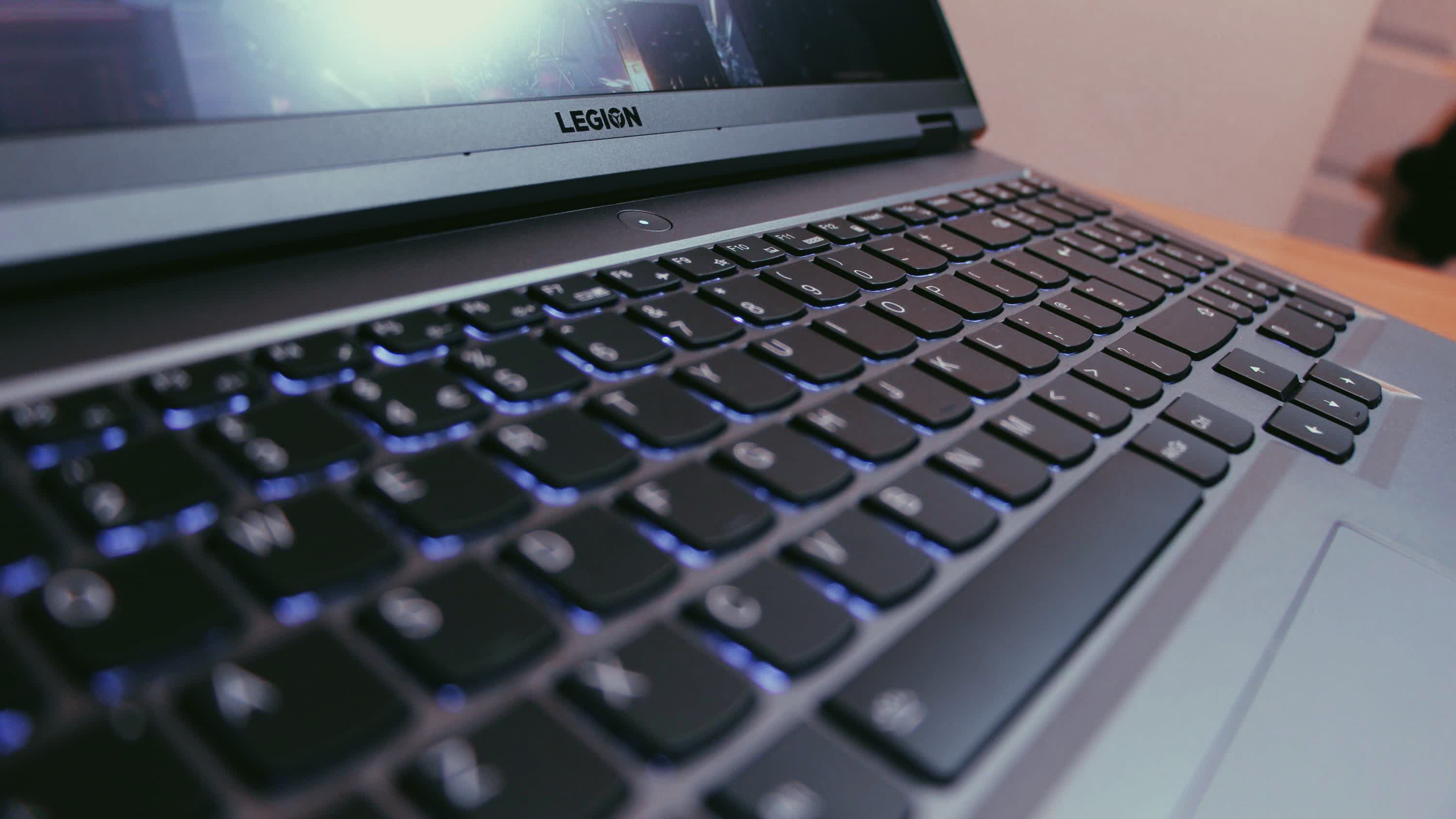
The keys are slightly concave, which improves comfort, and they’re fast, comfortable, and reasonably satisfying – they’ve got a solid 1.5mm of travel and they push down into a robust base. These buttons are far quieter than the hardware included on most gaming notebooks, too. For a full day of typing or gaming, it’s good gear.
The Lenovo doesn’t have per-key RGB backlighting, though. Some models in certain regions have four-zone RGB backlighting that users can customize in Corsair iCUE, but the review sample we received only has a white backlight – and the illumination isn’t particularly strong.
On the other hand, Lenovo’s touchpad is a disappointment. The surface is fine, but click buttons are too soft and the pad sits too far towards the machine’s left edge. Consequently, it’s annoyingly easy to jog the pad if you’re using the left-hand side of the keyboard for gaming. As ever, if you want to enjoy gaming on a laptop, you’ll invest in a USB mouse.
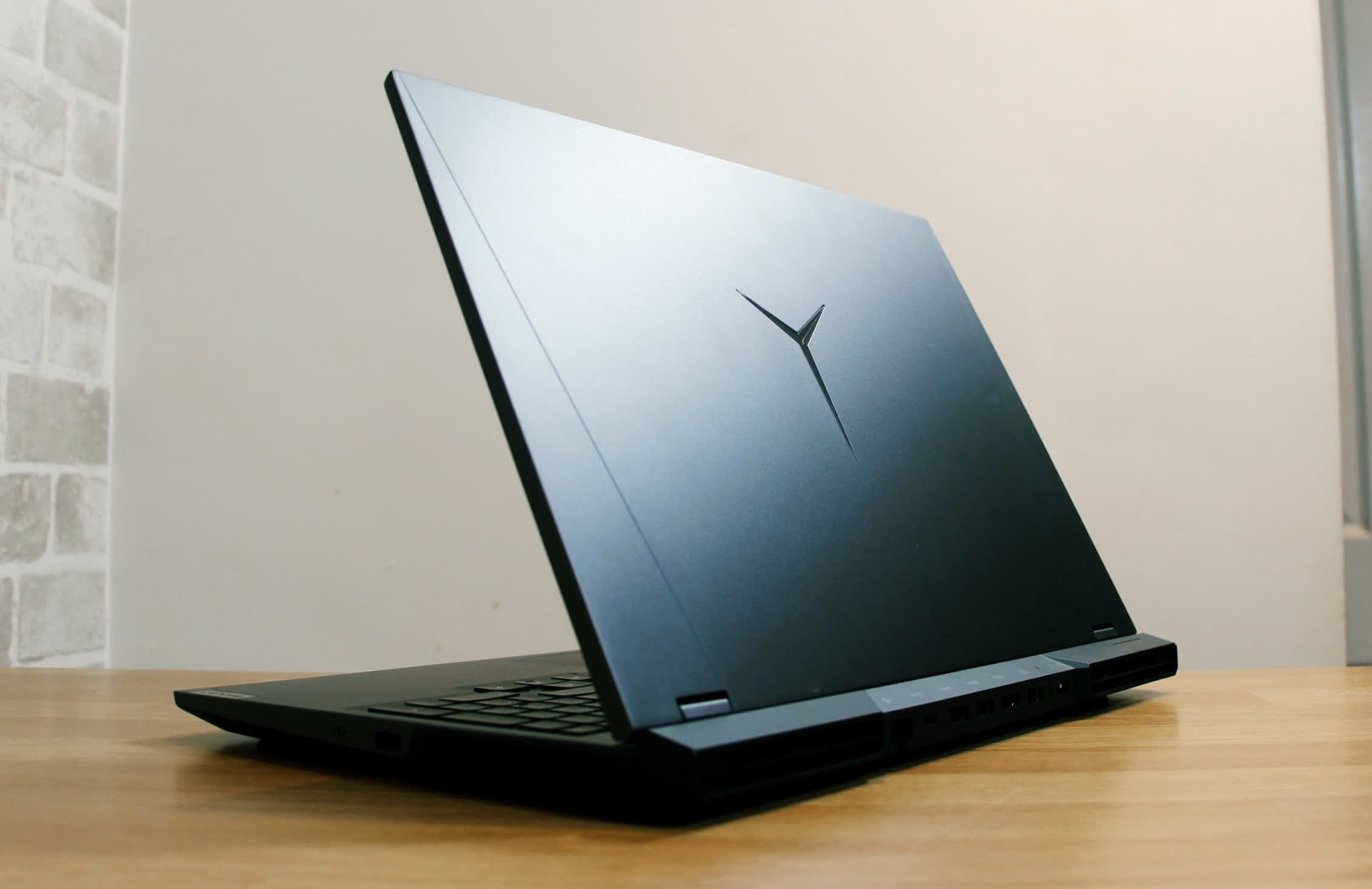
The Lenovo Legion 5 is built from a combination of aluminum and plastic in a gunmetal grey shade, and the only RGB illumination comes from the logo on the lid. Some people will call it subtle, and others will call it boring, but this laptop can straddle the gaming room and boardroom.
The Lenovo is good in other practical areas. There’s hardly any movement in the wrist-rest and screen, and the underside feels sturdy – we have no build quality concerns about this machine. Its 26.8mm thickness and 5.6 pound weight is a middling figure for a 16” notebook. It shouldn’t be a huge problem to take the Lenovo to gaming events or the office, although bear in mind that the hefty power brick adds 1.7 pounds to the overall package.
Connectivity is decent. On the right-hand side you’ll find a USB 3.2 Gen 1 port and a privacy slider for the 720p webcam. On the left there’s a USB 3.2 Gen 2 Type-C port that handles DisplayPort. Most of the ports are at the rear, which is handy for cable management, and here the Lenovo deploys a pair of USB 3.2 Gen 1 ports alongside a full-size USB 3.2 Gen 2 port that offers 5V of always-on power delivery – ideal for charging phones and gamepads.
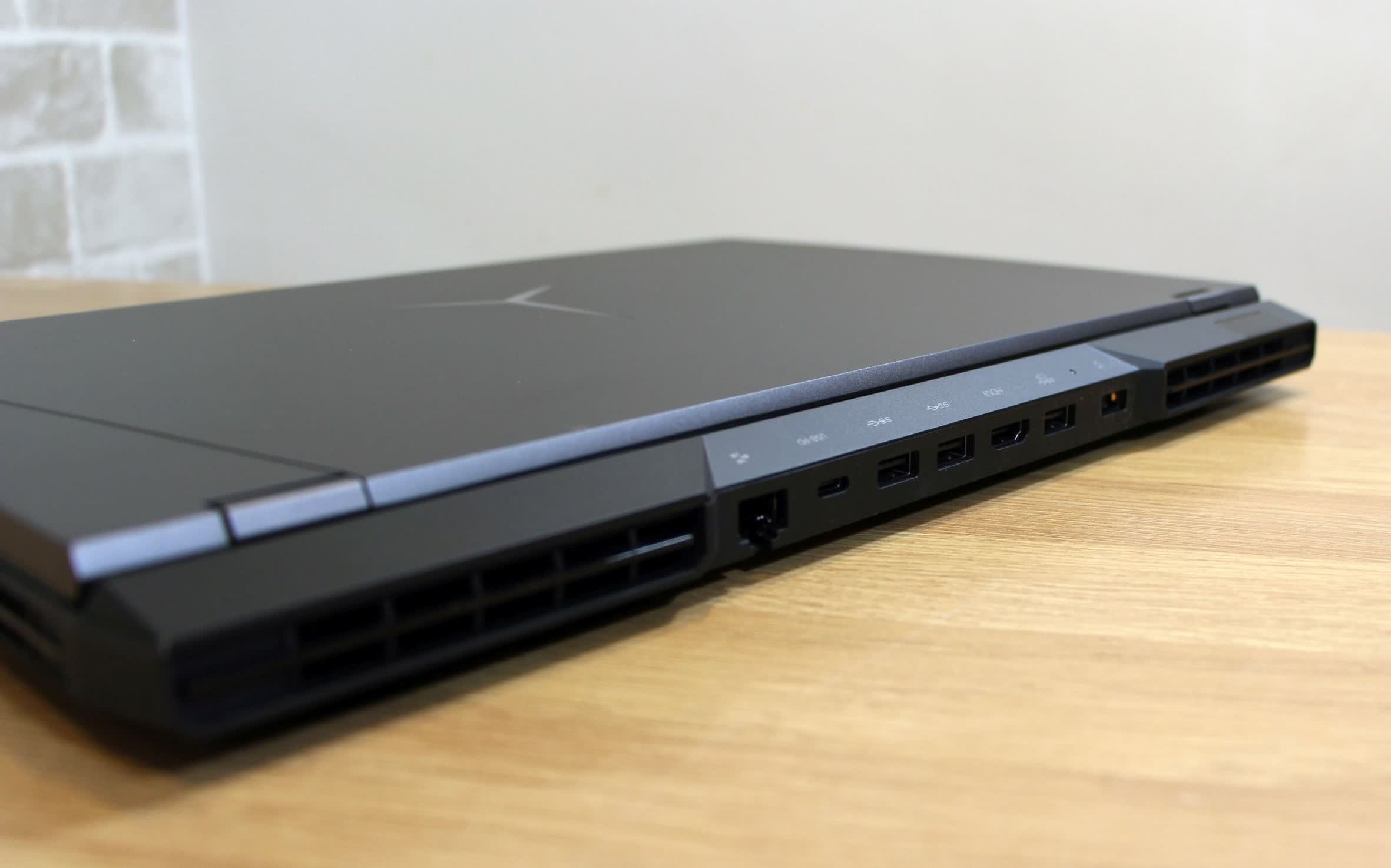
The rear has another USB 3.2 Gen 2 Type-C/DisplayPort socket that can charge the laptop or supply 5V of electrical output. There’s also a Gigabit Ethernet socket and a HDMI 2.1 socket that can handle 4K/120Hz output for future-proofed gaming.
On the inside, that Gigabit Ethernet connection sits alongside dual-band 802.11ax wireless and Bluetooth 5.2. The base is easy to remove thanks to conventional Phillips screws, and on the inside you can easily reach pairs of memory slots and M.2 connectors. It’s a solid set of features, and the only things missing are card and fingerprint readers and Windows Hello in the webcam.
Performance
The Lenovo Legion 5 Pro we tested arrived with an RTX 3070 Laptop GPU (follow link for the full review) sporting its usual 5,120 stream processors and 8GB of memory. In this notebook it has a peak power level of 140W when the laptop’s Performance Mode is deployed – that’s as high as this chip can go. Its power level tops out at 117W in its default Balanced Mode.
The rest of the Legion’s specification is decent. AMD’s 8-core Ryzen 7 5800H runs with a peak power level of 45W, which is right in the middle of its range. There’s 16GB of dual-channel memory clocked to a solid 3200MHz, and the 512GB SSD delivers read and write speeds of 3,569 MB/s and 2,802 MB/s. Those are fine speeds for everyday work and gaming, and they keep the machine snappy, but the best drives are twice as quick and a 1TB drive would have been better for large game collections. At least there’s an easy upgrade path in the future.

We’ve already taken deep dives into these core components: head here if you’d like an in-depth examination of the AMD Ryzen 7 5800H, and here’s our dedicated review of the GeForce RTX 3070 laptop core and its desktop counterpart.
The RTX 3070 delivers reasonable gaming speeds. Gaming at 1080p we tested six games averaging between 82 fps and 140 fps, handling every title. In the tough Assassin’s Creed Valhalla benchmark, the Lenovo’s minimum framerate of 42.8 fps is still enough to ensure decent single-player gameplay. In competitive title Rainbow Six Siege, the Lenovo’s 1080p frame rate of 280 fps is easily enough to outpace the display and keep up with G-Sync. Increasing the resolution to 1920 x 1200, in line with the display aspect ratio, we only dropped a couple of frames from the 1080p results.
The RTX 3070 continued to perform well at the Lenovo’s native resolution of 2,560 x 1,600 and with games still running at their maximum quality levels. In Valhalla, Red Dead Redemption 2 and Far Cry New Dawn, the Legion returned results between 62 fps and 79 fps with minimums at 38 fps and beyond, so you’ll get smooth and playable frame rates in mainstream single-player games, especially where DLSS can work wonders.
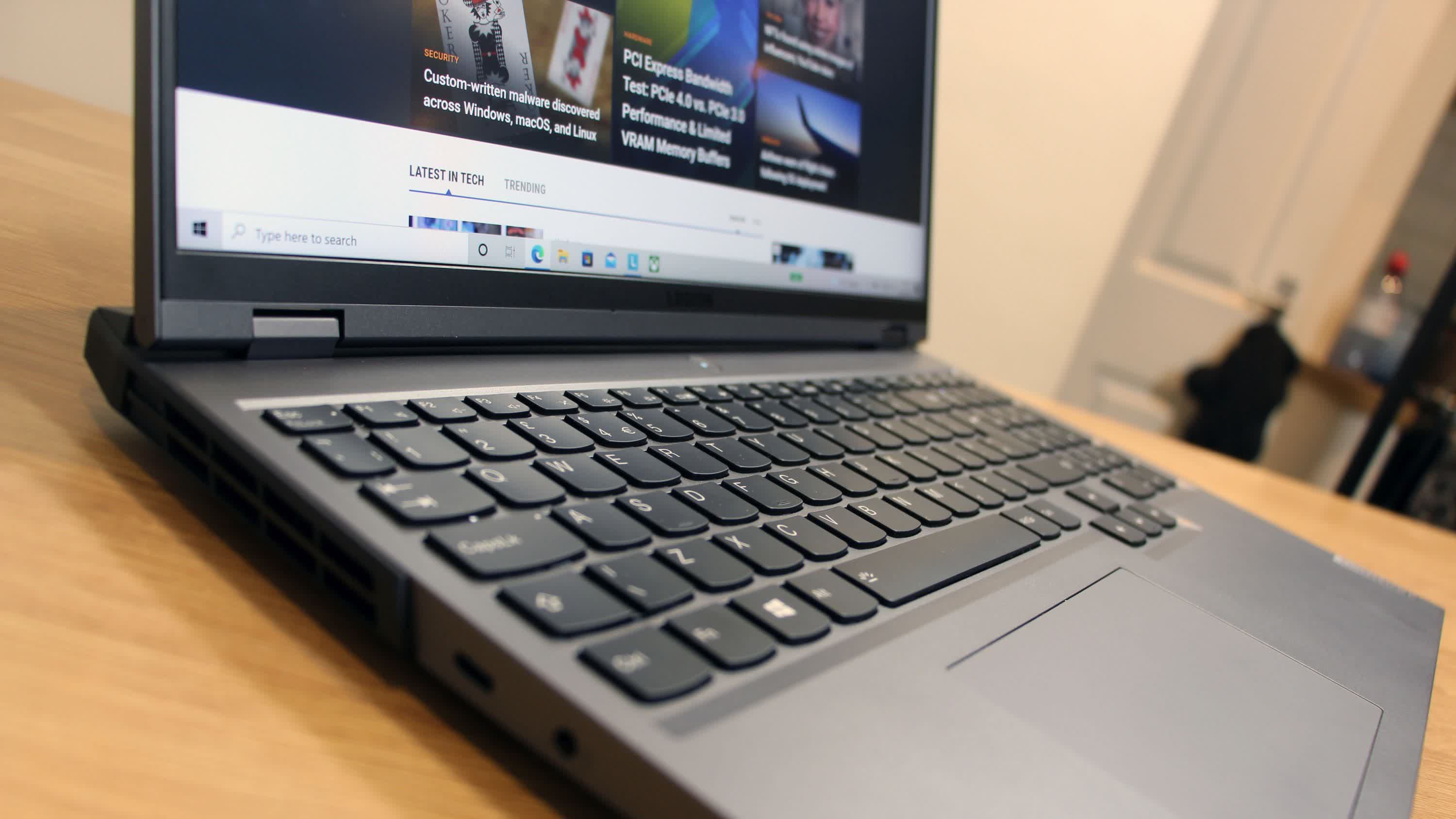
You’ll have to compromise graphics settings in a handful of situations. If you want to play the most challenging games with minimum framerates consistently beyond 60 fps then be prepared to head into menus and reduce some options. Similarly, the toughest ray-traced games may struggle: at the laptop’s native resolution and with ray tracing and DLSS activated, the Legion played Cyberpunk 2077 with a 32 fps minimum and 37 fps average. That’s playable – just about – but you’ll experience slowdown in busy scenes and you may want to dial back settings to get nearer to 60 fps.
It’s a generally good bill of health for the Lenovo, but the RTX 3070 is not flawless. In our review of the GPU it was paired with a Ryzen 9 5900HX, and it was consistently a few frames faster. As of writing, the Legion 5 Pro tops out at the RTX 3070, so you can’t configure with with the faster RTX 3080 Laptop GPU.
The Lenovo’s Ryzen 7 5800H delivered single- and multi-core scores of 537 and 4,526 in Cinebench R20. Those results are barely behind the best scores we’ve recorded from that chip. The Lenovo delivered decent performance elsewhere. Its PCMark 10 Application result of 13,054 and its Essentials score of 9,882 both slotted expectedly behind the Ryzen 9 chip and ahead of anything that Intel brings to the table at least until Alder Lake lands on mobile.
It’s good pace, but in some areas this particular 5800H isn’t the fastest version of the chip we’ve seen. In the Blender 2.91 test it took 10:22 to render our test scene, which is around half a minute behind the 5800H’s optimum pace, but still ahead of Intel’s equivalent CPUs. In the Matlab benchmark, the Lenovo scored 1.4936, which is behind the best 5800H implementations, Ryzen 9 and Core i7 CPUs.
The Lenovo completed our Excel benchmark in 12.55 seconds. That’s about one second behind the 5800H when that chip’s at its best, and it’s behind the Core i7-11800H too. Similarly, its 7-Zip compression and decompression results of 39 MB/s and 641 MB/s are fine.
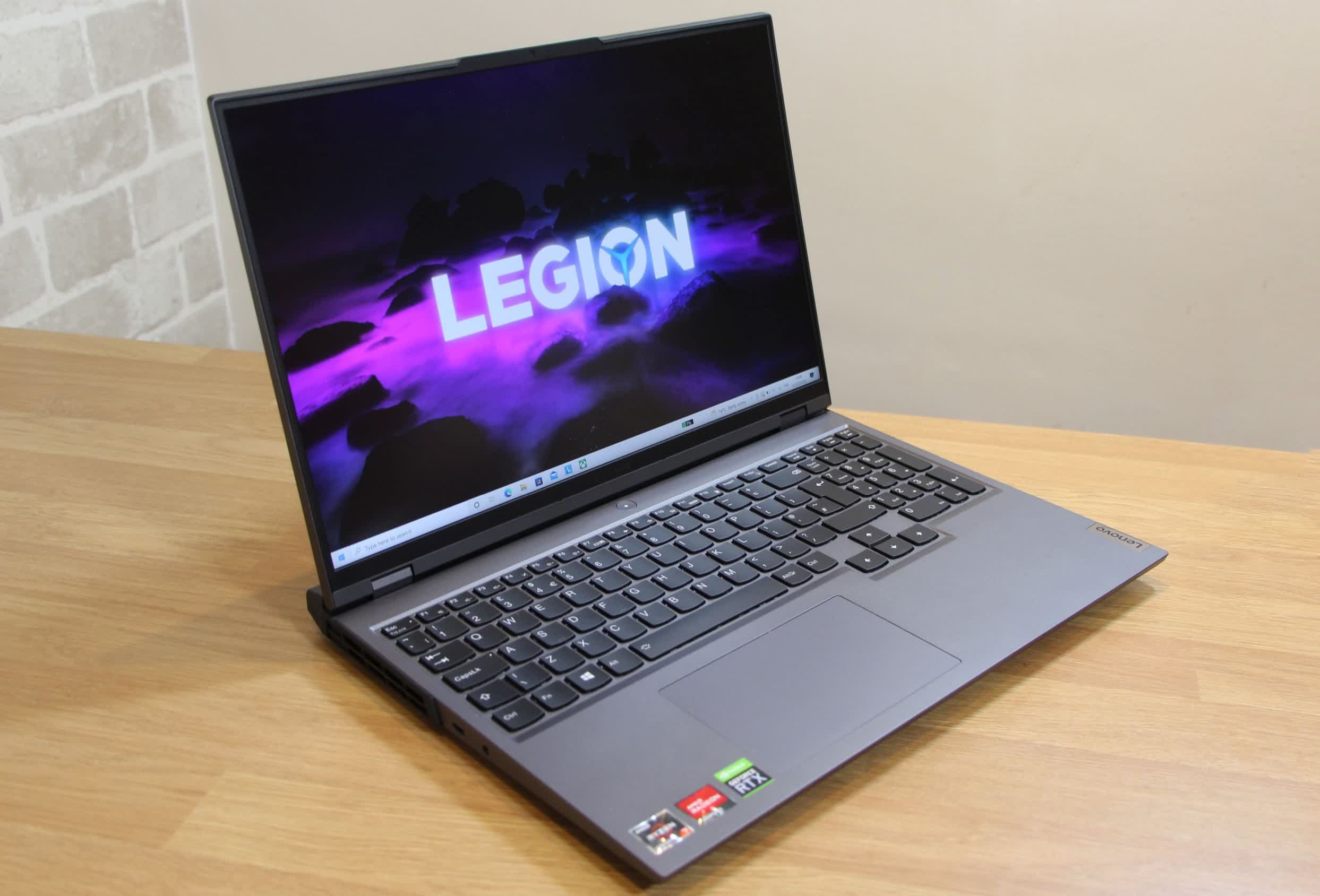
A look at the clock speeds explains this slightly sluggish performance. In a multi-core work test the processor attained a top speed of 3.34GHz, and in a single-core test it hit 4.2GHz. Both of those speeds are below the chip’s theoretical top speeds, which sit at around 3.7GHz and 4.4GHz.
Deploying the laptop’s Performance Mode saw the CPU’s multi-core peak elevate to 3.9GHz, with the former figure achieved via dynamic overclocking. With this mode activated, the laptop’s Cinebench score improved to 4,953, which is virtually identical to the Ryzen 9 5900HX. Its revised Matlab result of 1.4275 is better, although still not able to match the chip’s best results. In Performance Mode, the CPU’s improved single-core speed of 4.2GHz remains a little short of what the chip can achieve on paper, so it didn’t have a significant impact on performance in single-threaded workloads.
The 5800H doesn’t reach its full potential in this laptop, but there’s no mistaking this for a slow processor. It will avoid any gaming bottleneck and will run any mainstream content-creation task without complaint.
Thermals
The flip side of the slightly subdued CPU performance is reasonable thermal and aural ability. When running single- and multi-core benchmarks in its default Balanced Mode, the Lenovo’s peak noise output was 36db, which is very quiet and easy to manage. There was little exterior heat on the panels, and warm air was helpfully blown from the rear.
When Performance Mode ran during a work test, the machine’s noise output lifted to 45db. That’s more noticeable, but it’s not bad, and a headset or a busy office will easily drown that out. The CPU’s peak temperature of 93C is a tad high, but it’s not dangerous, the exterior remained cool, and hot air was still ejected from the back of the notebook.
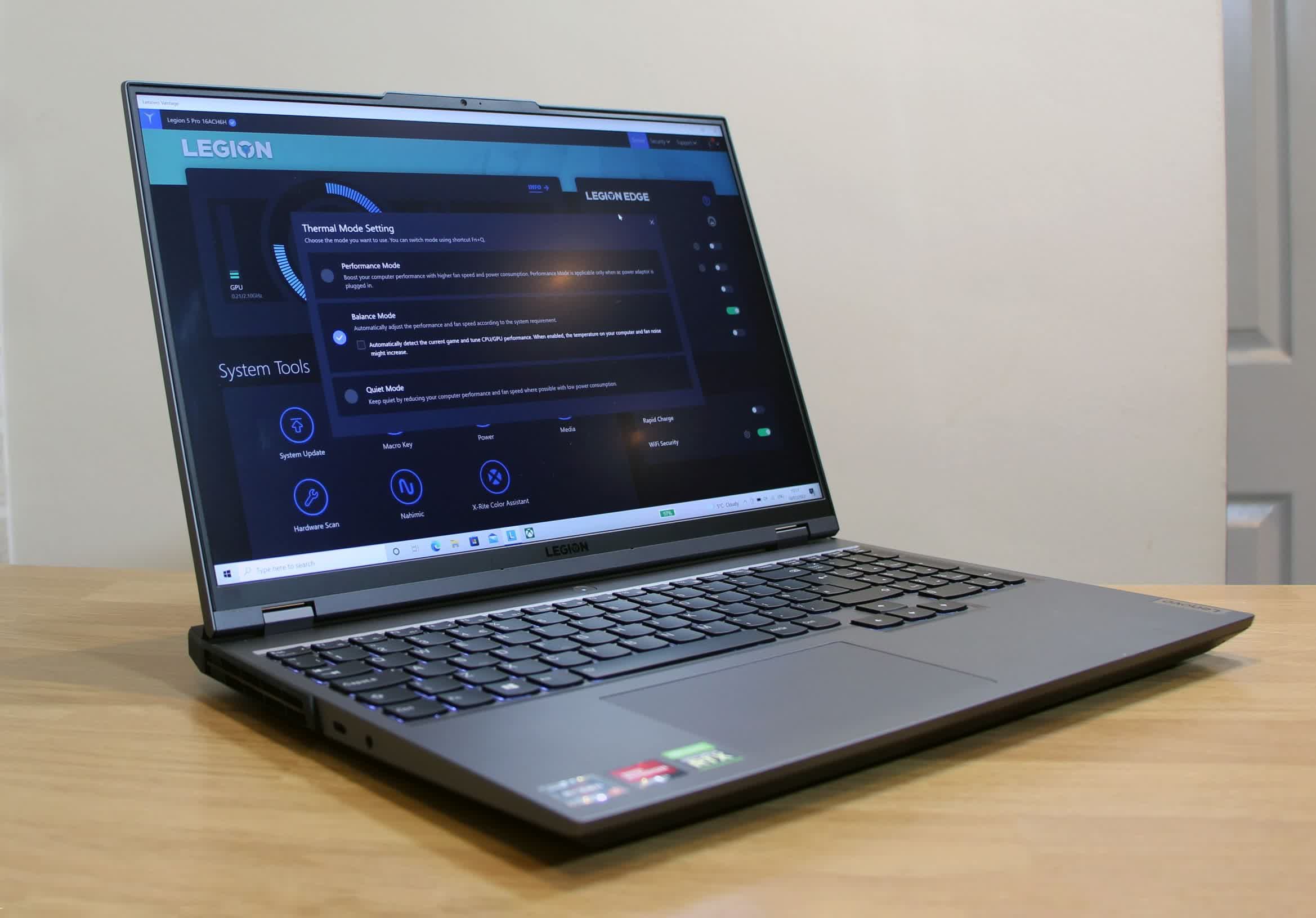
When we played games with the laptop in Balanced Mode, the noise level of 42db wasn’t bad at all – a tad quieter than most gaming machines and easy to manage. The underside of the machine became hot, but that’s not a big deal when this machine will stay rooted to the desk.
The laptop’s Performance Mode saw the noise level rise to 48db during a gaming test. That’s loud enough that you’ll notice the laptop, but it’s not unusual and it’s not the worst we’ve seen – a top end Asus ROG laptop we tested last year topped out at 55db, for instance. That said, we don’t think it’s worth generating all of that extra noise for a couple of extra frames in games.
The Lenovo has a Quiet Mode, too, and it lived up to its word – it peaked at a tiny 37db during games tests and was silent during workloads. While that’s impressive, it does restrict performance, so it’s only suitable for casual games and low-intensity tasks.
As for battery life, the Lenovo is an unsurprising performer. It lasted just under 90 minutes when gaming, no matter what display brightness settings we used, and GPU performance is restricted when the laptop runs on battery power, too. Like most gaming laptops, this machine is not well-suited to long play sessions away from a power source.
With the screen running at 50% brightness, the Lenovo lasted for 3 hours and 44 minutes, while tackling work tasks. That’s reasonable, and switching to the notebook’s hybrid mode, which relies on integrated graphics saw that lifespan improve to 6 hours. That’s nice for a gaming notebook, but you’ll only get that sort of longevity from the machine in less-intensive tasks that don’t require the GPU, and the Legion still won’t make it through a whole day of work without a power adapter.
Wrap Up
Lenovo has taken some unusual design decisions with the Legion 5 Pro, and we’re pleased to report that they’ve mostly worked out well. The display is superb. The extra height delivers welcome real estate for games and work. The resolution is high enough to provide crisp gameplay which can be handled by the included GPU, it delivers exceptional brightness and good color accuracy. You’ll only want something better if you need a faster display for high-end esports or creative work, and both will cost loads more.
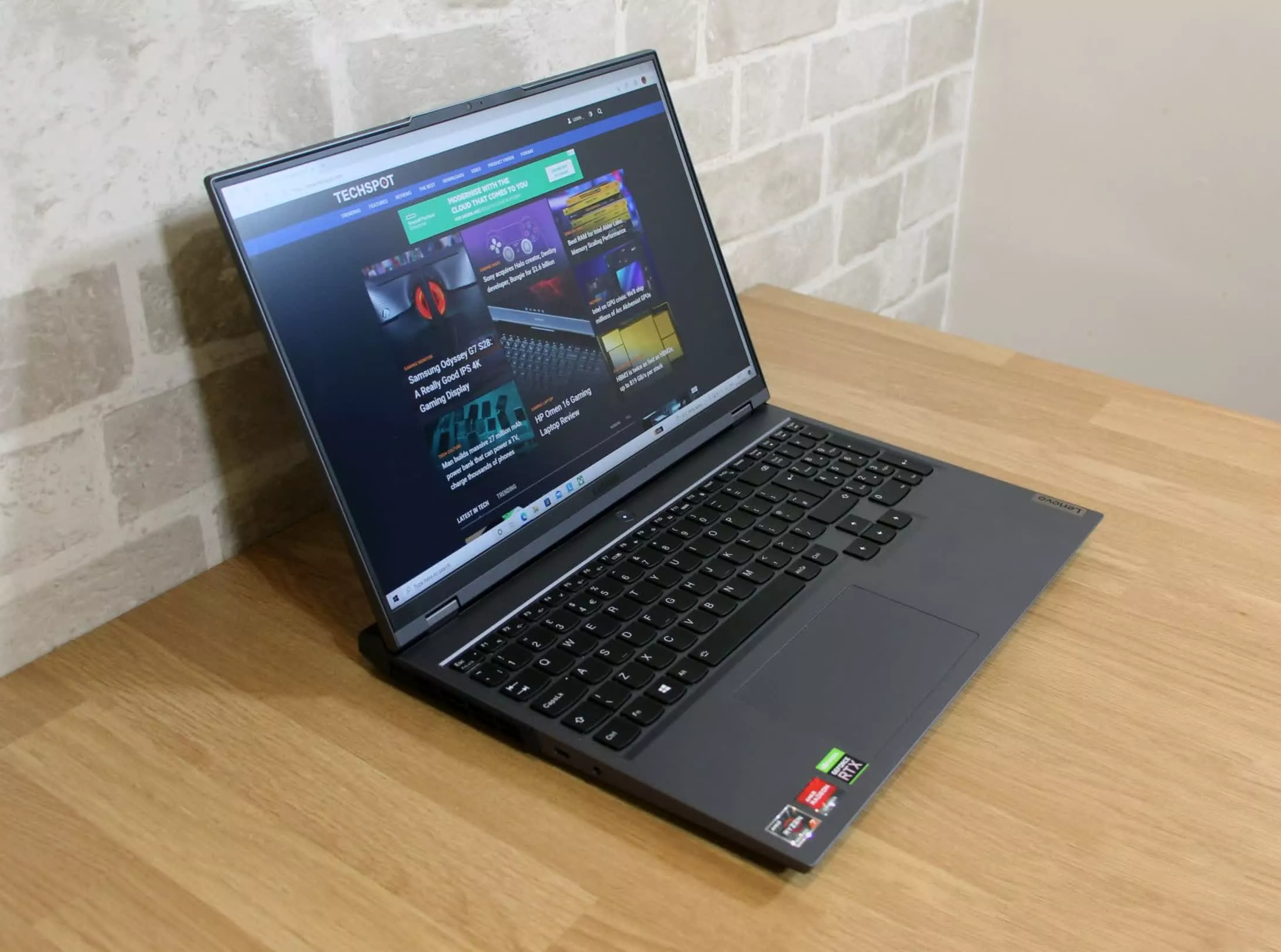
Lenovo’s machine has a comfortable, quiet keyboard, solid connectivity, and it’s got decent internals — of course, there are various configurations available that seem to be priced competitively. The graphics core will handle almost any gaming task, and the processor is quick even if it doesn’t achieve its full potential. That’s about all we can ask for from a laptop at this price, and the Legion manages to keep the noise down to reasonable levels in most mainstream situations.
As ever, there are some areas where this laptop doesn’t quite succeed. It’s not the best looking notebook, and its trackpad and speakers are underwhelming. It’s not the best laptop to buy if you want ultimate power, a machine for frequent traveling, or a gaming laptop for esports. Battery life is unsurprisingly short during gameplay, even if it’s better in certain work tasks.
But if you want a big-screen notebook for games and working without the size and extravagance of many other gaming devices, the Lenovo Legion 5 Pro ticks plenty of the boxes, from its absorbing display and solid internals to its great connectivity and attractive price.
Shopping Shortcuts
- Lenovo Legion 5 Pro (RTX 3070) on Amazon
- Lenovo Legion 5 Pro (RTX 3060) on Amazon
- Lenovo Legion 5 Pro (RTX 3050) at Lenovo

